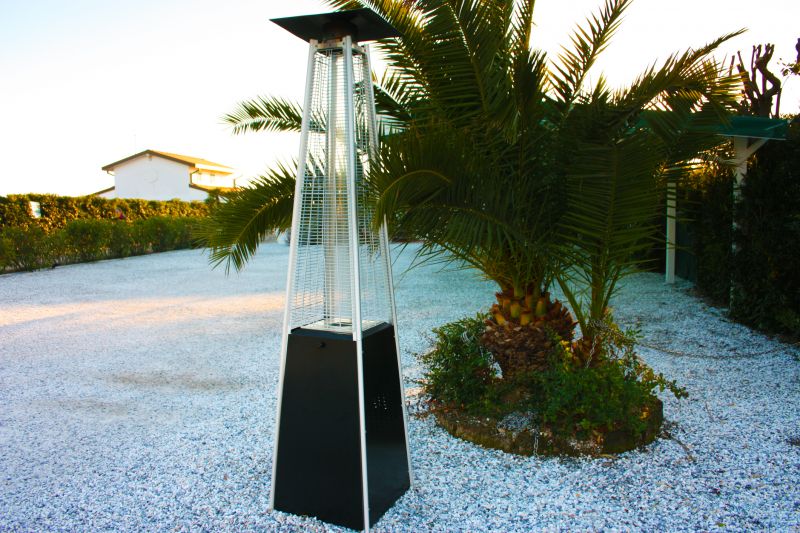Popular Heated Driveway Equipment for Seamless Installation
Discover essential products that make installing a heated driveway straightforward, durable, and effective for long-term use.
 Installing a heated driveway can enhance safety and convenience during winter months by reducing the need for manual snow removal. The range of products available for heated driveway installations includes various heating elements, control systems, and installation accessories designed to accommodate different driveway sizes and materials. These systems typically involve electric mats, cables, or hydronic piping that generate heat to melt snow and ice, maintaining a clear surface. Proper selection and installation of these products can ensure efficient operation and long-term performance.
Installing a heated driveway can enhance safety and convenience during winter months by reducing the need for manual snow removal. The range of products available for heated driveway installations includes various heating elements, control systems, and installation accessories designed to accommodate different driveway sizes and materials. These systems typically involve electric mats, cables, or hydronic piping that generate heat to melt snow and ice, maintaining a clear surface. Proper selection and installation of these products can ensure efficient operation and long-term performance.
Top Overall Option
Electric Heating Mat System
An electric heating mat system offers a versatile and straightforward solution for heated driveway installations. These mats are designed to be installed directly under the driveway surface, providing even heat distribution and efficient snow melting. They are compatible with various driveway materials and can be controlled via thermostats for customized operation. This type of system is suitable for both residential and small commercial applications, offering a balance of ease of installation and reliable performance.
Types of Products For Heated Driveway Installations
Electric Heating Mats
Flexible mats embedded with heating cables designed for quick installation under driveways.
Electric Heating Cables
Individual cables that can be laid out in custom patterns to fit various driveway shapes and sizes.
Hydronic Piping Systems
Pipes that circulate heated water beneath the driveway surface for large-scale heating solutions.
Thermostats and Sensors
Devices that regulate temperature and activate the system based on ambient conditions.
Control Panels
Central units that manage system operation, scheduling, and safety features.
Insulation Boards
Materials placed beneath the heating elements to improve efficiency and prevent heat loss.
Installation Accessories
Connectors, clips, and fasteners designed to facilitate secure and proper installation.
Concrete or Asphalt Heating Elements
Specialized embedded components compatible with common driveway materials.
Snow Sensors
Automatic sensors that detect snowfall and activate the system accordingly.
Weatherproof Junction Boxes
Enclosures that protect electrical connections from moisture and damage.
Remote Monitoring Devices
Systems that allow for remote control and status updates of the heated driveway setup.
Popular Choices
A common choice for quick and easy installation under various driveway surfaces.
Flexible cables suitable for custom layouts and targeted heating zones.
Ideal for larger driveways requiring extensive snow melting capabilities.
Smart control options that enhance system efficiency and responsiveness.
Sensors that activate the system automatically during snowfall.
User-friendly interfaces for managing and scheduling system operation.
Help improve energy efficiency by reducing heat loss.
Ensure safe electrical connections exposed to outdoor elements.
Allow users to oversee system status remotely for convenience.
Embedded components compatible with poured concrete driveways.
Designed for asphalt surfaces requiring snow melting solutions.
Cables that can be tailored to specific driveway layouts.
Electric heating mats and cables are among the most common options, offering straightforward installation under concrete, asphalt, or pavers. Hydronic systems, which circulate heated water through tubing embedded in the driveway, are often used for larger areas or commercial applications. When choosing a product, factors such as power requirements, ease of installation, and compatibility with existing driveway materials should be considered. Many systems also include thermostats or sensors that help regulate temperature and optimize energy use.
It's important to evaluate the specific needs of your property, including driveway size, local climate, and budget constraints. Proper planning and professional installation can help maximize the effectiveness of the heated driveway system. Regular maintenance and monitoring of the system can also ensure consistent performance over time. Whether you opt for electric or hydronic solutions, understanding the different product types and their features can assist in making an informed decision tailored to your preferences and requirements.
Key Buying Considerations
- Assess the size and shape of your driveway to determine the appropriate system capacity.
- Decide between electric and hydronic systems based on project scale and existing infrastructure.
- Evaluate the compatibility of the heating elements with your driveway material (concrete, asphalt, pavers).
- Consider the ease of installation and whether professional assistance is recommended.
- Look into control options such as thermostats and snow sensors for automated operation.
- Check the energy requirements and ensure your electrical system can support the installation.
- Review insulation options to increase efficiency and reduce heat loss.
- Examine safety features like weatherproof junction boxes and circuit protection.
- Determine the level of customization needed for your driveway layout.
- Estimate maintenance needs and system longevity based on product specifications.
- Consider budget constraints while balancing quality and feature set.
- Research available warranties and customer support options.
- Think about future expansion possibilities or upgrades.
- Ensure compliance with local electrical codes and regulations.
- Evaluate the environmental conditions to choose the most suitable system type.
